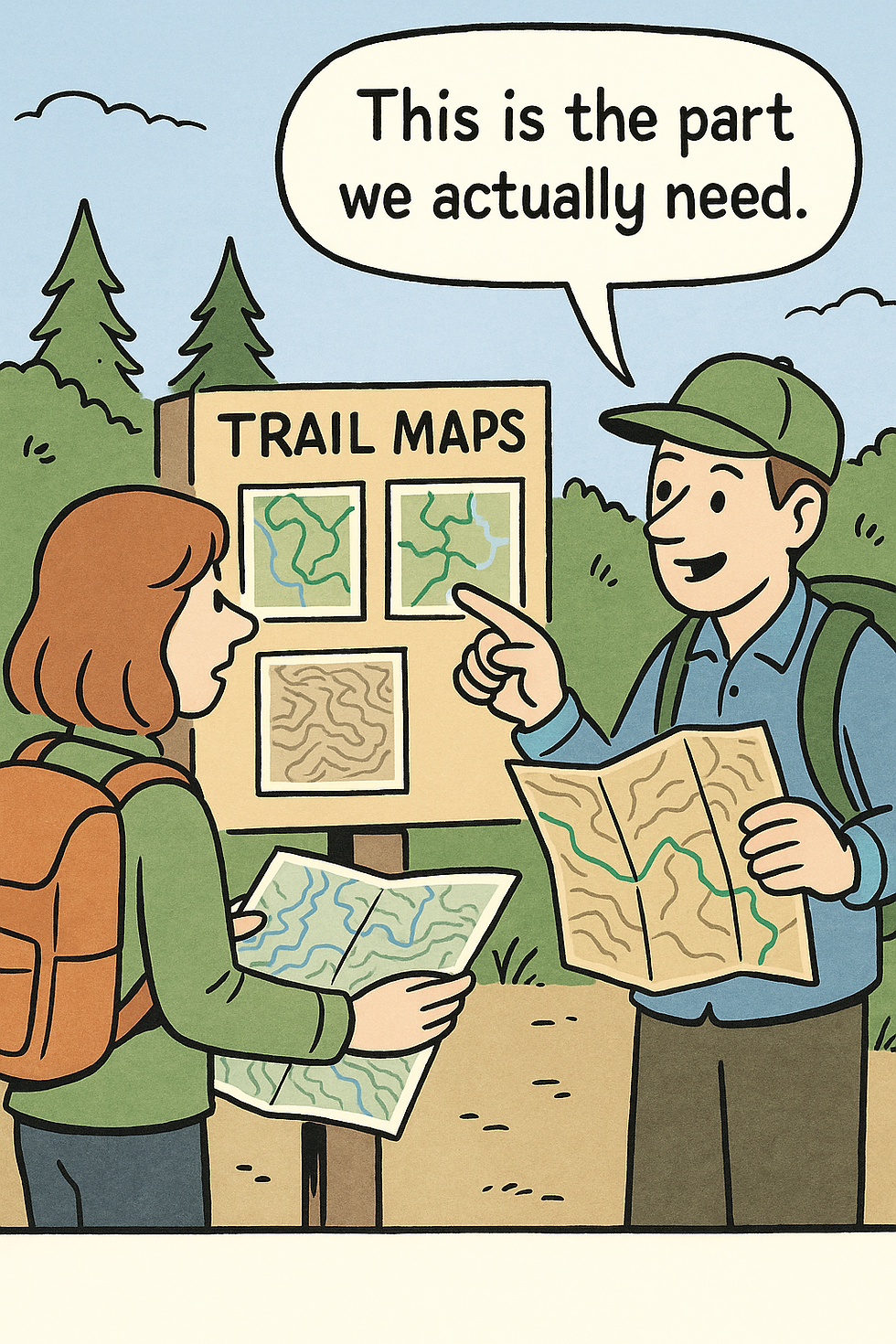Step Back to Move Forward: Understanding the Current State
- Improve My Process

- Nov 5
- 3 min read
Noticing What Could Be Better
As you go about your daily work, it’s natural to spot opportunities for improvement. For example, in a finance role, you might see outdated systems, policies that need refinement, delayed purchase orders, or duplicated work.
When you see areas that could be improved, it doesn’t mean your company is disorganized. Every organization has aspects that can be refined. Sometimes it’s easy to jump straight to a conclusion like, “We need new software.” You might be right, but being so close to the work can make it hard to notice everything.
What if there are other factors at play? What if something about how the software is used could be adjusted instead? Since software can be a significant investment, it’s worth asking where that solution fits when weighing cost, effort, and impact.
You can’t really answer that unless you take a step back, involve other perspectives, and look at how and why the software is used. This step can feel unnecessary or even tedious, especially when you already know your job well. It can also feel complicated when more people get involved. But there’s real value in taking this step – this is what we call understanding the current state.
Looking Past Surface Solutions
Have you ever opened your fridge and thought, “Wow, this fridge is stuffed full”? If not the fridge, think about a pantry, cabinet, or really any space in your house. You take a look, and there just doesn’t seem to be any room for anything else. You might say, we need a bigger fridge, let’s buy more organizers, or we just need to shove things in there better.

But then you take a step back and evaluate the contents of the fridge. You realize there’s some expired food, and maybe a few things that don’t really need to be refrigerated. Suddenly, a new fridge may not be the answer. It still might be, but the idea is to conduct a full evaluation before reaching that conclusion. Without that step, you might never notice what’s been sitting unused in the back.
Note that, while understanding the current state is generally good practice, it’s also a judgment call. It doesn’t always apply to quick improvements, or “Just Do It” items, where immediate action makes the most sense.
Taking a Step Back
So how do you take a step back and look at the bigger picture? There isn’t one single method, but there are useful tools. One that we often use at IMP is the Process Map.
We start by focusing on a specific area, such as information management, and map out the key steps in the process (along with who is responsible for what). Teams are often surprised by how much insight they gain once everyone contributes their piece of the puzzle.
Many find that viewing the process as a diagram helps them better understand how work actually gets done. Think of an org chart. You might have an idea of who reports to whom, but seeing it visually helps you understand the relationships more clearly. A process map works in a similar way. It shows all the steps that make up a workflow. From there, it becomes a launching point to spot where things could be improved.
Process mapping can easily be its own topic, which we’ll cover in more detail another time.
The Key Takeaway
Create space for yourself and your team to understand the current state. When you do, the improvements you decide to implement are likely to be more effective.
